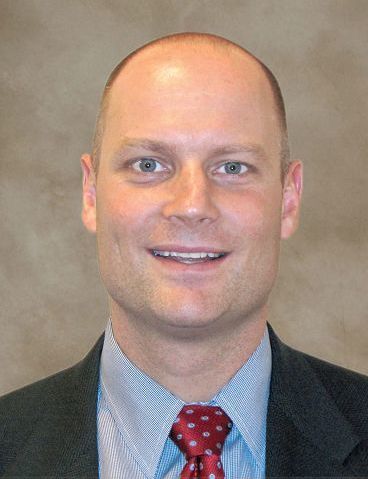The state of Wooster City Schools
Michael Tefs, superintendent of the Wooster City Schools, used this months Superintendent Coffee event April 17 to talk about the state of the district. He told residents attending the morning coffee at the Wooster Country Club he will be giving the same talk numerous times this spring and the information he distributed was a draft that could change before the end of the school year.
He discussed funding, enrollment, teacher salaries, transportation, meal services, Wooster schools performance index, safety and the vision for the future.
This is state of the schools season where its the time of the year that districts are winding down the current school year and preparing for the next one all at the same time, Tefs said. The next three months are really busy for us.
- The Numbers
Starting with funding, Tefs said that Educating children is big business in the state of Ohio. There are 611 school districts in Ohio. Wayne County is ranked 11th highest out of 88 counties in the state academically and that is trending even higher.
Total budget for the year, including both general and other funds, is $56 million. For the year ending 2012, close to 58 percent of the funding came from local taxpayer dollars. State funding accounted for 35 percent and seven percent came from federal tax dollars.
Sequestration is going to affect our funding. I expect a six to 10 percent reduction in federal funding. Plus, there is a new state funding model being developed by the state of Ohio that could impact our district, Tefs said.
With personnel retirements this year, there will be additional funding to help the district get through the next year.
We have 600 accumulated years of experience or about 21 teachers, aides and tutors retiring this year. With the pension reform in 2013, and with being able to hire newer teachers at lower wages, we will gain enough revenue to sustain us through the end of the school year for 2014, Tefs said.
The average teachers salary for the year was $56,251. The county average was $54,363 annually. This year the district had 485 FTE (fulltime equivalent) with 54 contract employees. Tefs said the districts salaries are competitive and not overpaid.
This is the first year we have been below 500 employees since 2009. We have not been replacing all of the employees that have been retiring, Tefs said.
Current enrollment is 3,800 students. Tefs said projected enrollment is flat with minimal growth. The district is 51 percent economically disadvantaged. Close to 18 percent of students with disabilities were served by the district this year with expenditures per special education student of $13,652.
Total value of buildings and grounds was $35,247,447 with total square footage of 875,096 and a total of 190 acres. Utility costs for the year were natural gas, $309,000; electric, $697,000; fuel, $189,000; and water/sewer, $135,000.
Diesel fuel is skyrocketing and natural gas is declining. With a 51 percent poverty rate in the district, if we dont pick up the students, we end up with an attendance issue. We have worked hard to consolidate the number of stops, Tefs said.
For the year, there were 35 buses with 158 routes, 2,448 stops, that drove 2,142 miles per day. The district serves close to 3,000 meals a day including breakfast and lunch in all schools.
- Academic Achievements
The district received a rating of Excellent with Distinction for the second year in row. The performance index (PI) for both years was 101.5. Tefs said the district is striving for 104 PI, which is the number that many districts in Ohio similar to Wooster achieve.
We are currently offering 16 AP (Advanced Placement) classes. Seven AP classes is the average for a district our size. There is an expense associated with offering that many classes but we do see a return on that investment with student achievement, Tefs said.
- Safety and the Future
Safety was one issue that many in attendance questioned, including when all of the schools will be fitted with cameras and keypads at the doors. Currently, the doors are locked on each school and people have to ring to be allowed entry.
There are two pilot programs going on at Melrose and Kean Elementary schools that will be complete by the end of May. We will test and tweak the system over the summer and work toward getting all the schools done by the end of next year, Tefs said.
He said that locking the doors is not the perfect solution but he feels the students are safer. Tefs also talked about the vision for the future.
We are looking at what parts of the re-organization worked and what we need to work on. And, we want to continue to work on creating a district that everybody can be happy about and every child is maximizing their potential, he said.

